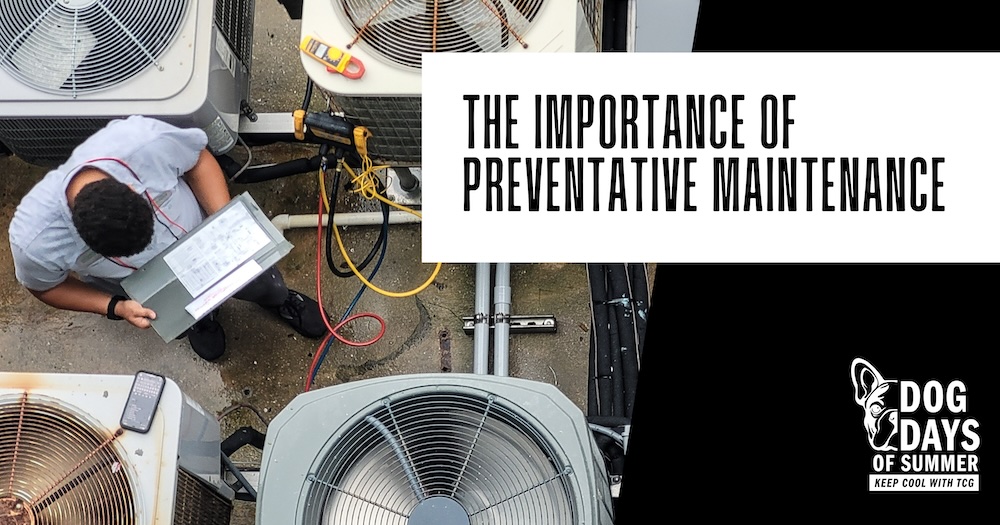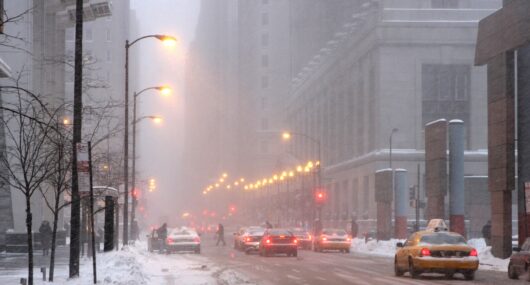
Wrapping Up the Dog Days of Summer: The Importance of Preventative Maintenance
As the summer draws close and we transition into the cooler months, it’s the perfect time to reflect on the challenges and solutions we’ve explored in our Dog Days of Summer series. We’ve highlighted key aspects of facility management, focusing on navigating the challenges that arise during the year’s hottest months. At the core of all these discussions is one fundamental principle: the importance of preventative maintenance.
In this concluding post, we’ll revisit the topics we’ve discussed over the past few weeks, underline the significance of preventative maintenance, and offer guidance on preparing your facilities for the upcoming fall season. Let’s dive in.
The Dog Days of Summer: A Recap
Our series began with a focus on maintaining clean HVAC filters. As the summer heat strains air conditioning units, dirty filters can significantly reduce efficiency, increase energy costs, and compromise indoor air quality. Regularly replacing or cleaning filters is a simple yet effective preventative measure that keeps your HVAC systems running smoothly.
Next, we discussed the necessity of essential coil cleaning. Over time, coils accumulate dust and debris, leading to decreased heat transfer efficiency and increased wear and tear on your system. Proper coil maintenance extends your equipment’s life and ensures optimal cooling during the peak summer months.
We then addressed the struggles to find replacement RTUs. As supply chain issues and new EPA regulations create hurdles for sourcing replacement rooftop units (RTUs), having a reliable partner who can provide the necessary equipment and services is more important than ever. Our extensive inventory of RTUs, nationwide coverage, and competitive pricing ensure facility managers have access to the parts they need when they need them.
As temperatures rise, so does the pressure put on commercial HVAC/R systems, making tackling improper cooling another critical focus. Improper cooling can result from various issues, including refrigerant leaks, faulty thermostats, or blocked airflow. Identifying and addressing these problems before they lead to costly repairs or system failures is a cornerstone of effective facility management.
Another critical but often overlooked aspect of summer maintenance is essential drain maintenance. Clogged drain lines can cause water damage, mold growth, and unpleasant odors, disrupting operations and posing health risks. Regular inspections and cleaning of drain lines are vital to preventing these issues and ensuring the safety and comfort of building occupants.
Finally, we explored the importance of mastering your equipment. A detailed understanding of your HVAC/R systems, plumbing fixtures, and electrical components enables more effective maintenance, budgeting, and compliance management. This knowledge allows you to take a proactive approach to asset management, reducing downtime and extending the life of your equipment.
The Power of Preventative Maintenance
As we’ve seen throughout the Dog Days of Summer series, preventative maintenance is the key to avoiding the many challenges that arise during the summer months. But its importance extends beyond just one season—it’s a year-round necessity.
Preventative maintenance involves regularly scheduled inspections, cleanings, and minor repairs to prevent major issues before they occur. This approach saves money by reducing the need for emergency repairs and ensures that your systems operate at peak efficiency, which can significantly lower energy costs.
Here are some of the core benefits of a robust preventative maintenance program:
- Increased Equipment Lifespan: Regular maintenance tasks, such as cleaning, lubrication, and component checks, can significantly extend the life of your equipment. By addressing wear and tear early, you prevent minor issues from turning into significant failures that require costly replacements.
- Improved Energy Efficiency: Clean and well-maintained systems like HVAC/R units operate more efficiently and consume less energy. This reduces your facility’s carbon footprint and results in lower utility bills.
- Enhanced Indoor Air Quality: Clean filters, coils, and drain lines contribute to better indoor air quality by reducing the circulation of dust, allergens, and mold. This creates a healthier environment for building occupants, which is especially important in workplaces and public facilities.
- Compliance with Regulations: Preventative maintenance helps ensure your equipment meets all necessary safety and environmental standards. This compliance is critical to avoiding fines, legal issues, and potential shutdowns due to non-compliance.
- Reduced Downtime: Identifying and fixing potential problems during regular maintenance reduces the likelihood of unexpected equipment failures. This proactive approach minimizes downtime and ensures your facility operates smoothly and efficiently.
Preparing for the Fall, The Next Step in Your Maintenance Strategy
As we move into the fall, your maintenance strategy should focus on preparing your facility for cooler weather. This transition period is ideal for conducting a comprehensive review of your systems, addressing any issues uncovered during the summer, and adjusting your preventative maintenance schedule accordingly.
Here’s what you should consider as part of your fall maintenance checklist:
- HVAC System Check: With the summer heat fading, it’s time to prepare your heating systems for the upcoming months. Inspect furnaces, boilers, and heat pumps to ensure they are ready to handle the increased demand. Remember to switch out filters, clean coils, and check thermostats.
- Roof and Gutter Maintenance: Fall often brings rain and falling leaves, which can clog gutters and lead to water damage. Ensure that your roof is in good condition and that gutters are clear of debris to prevent potential leaks and damage.
- Lighting Systems: As daylight hours decrease, ensure your indoor and outdoor lighting systems function properly. This is also an excellent time to replace outdated or inefficient lighting with energy-saving LED alternatives.
- Plumbing Inspections: Cooler weather can cause pipes to contract, potentially leading to leaks. A thorough inspection of your plumbing system can prevent costly repairs during the winter months.
Download our Fall Preventative Maintenance Checklist to guide you through essential tasks and stay on top of your maintenance needs.
[The Checklist can be downloaded Here]
Schedule Your Fall Preventative Maintenance Today
As you prepare for the changing seasons, now is the perfect time to schedule your fall preventative maintenance. At Total Comfort Group, we specialize in helping multi-site facility managers maintain their systems year-round. Our comprehensive maintenance programs are designed to keep your facility running smoothly, regardless of the weather.
Whether you need a thorough inspection of your HVAC/R systems, drain line cleaning, or a detailed asset management plan, our team is here to help. Don’t wait until the first cold snap to discover issues that could have been prevented.
Contact us today to schedule your fall maintenance and ensure your facility is ready for the season.
Thank you for following our Dog Days of Summer series. We hope the insights provided have been valuable in helping you manage your facilities more effectively!



